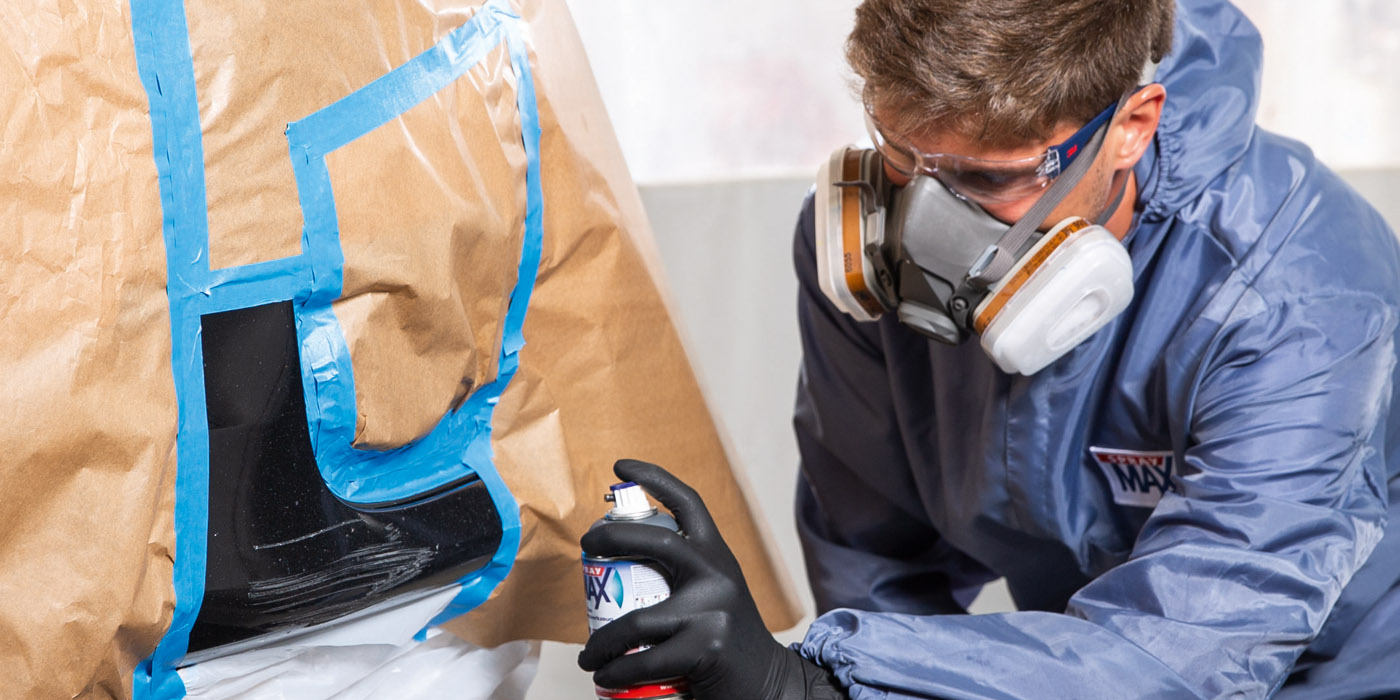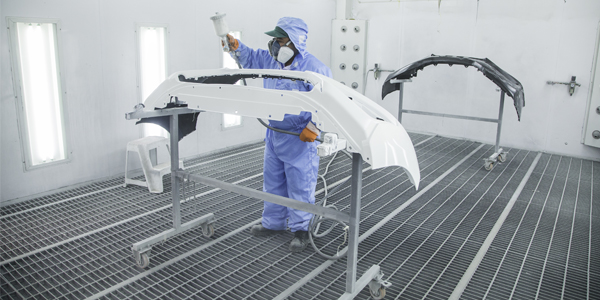ter, possibly a quick coupler that joins the cup to the gun, and a strainer to clean the material to be sprayed. Some systems employ a cylindrical “barrel” filter that snaps into the throat of the fluid inlet, and others use a flat, round filter screen that has much more surface area.
Waterborne Chemistry
The issue with waterborne chemistry and micron size pertains to how water resins cure. They dry by coalescing together to form a film, unlike solvent resins which dry by evaporation of the solvent into the air. A key difference is that a clotted hunk of solvent resin will re-dissolve in the presence of more solvent. A dried particle of waterborne resin that has clotted into a hunk won’t re-dissolve. As a result, several paint brands call for the smallest hole size (125 microns) to ensure that the final paint finish is perfectly smooth.
Remember that the change in paint chemistry is driven by the environmental rules enacted to clean the air we breathe. The amended Rule 1151 from the South Coast Air Quality Management District (SCAQMD), which covers most body shops in southern California and has become the model for many other regulatory bodies, doesn’t call for latex paint resin. It calls for basecoats that contain less than 3.5 lbs. of volatile organic compounds (VOC). Several paint brands have perfectly compliant coatings that still contain some solvent, along with or instead of water. If the basecoat still has solvent, dried chunks will be more likely to re-dissolve and can be suitably filtered with a 200-micron hole in the mesh.
Goal: Remove Particles
No matter which size sieve the paint manufacturer calls for, the goal is to remove any particles that can ruin the finish. As always, the biggest risk of particle contamination isn’t from the mixed color but from the dirt/dust on the vehicle/painter. A tack rag unfolded to its full size and wadded into a loose ball is the best way to ensure the surface is clean; a disposable paint suit will keep the dust on the painter from falling onto the car.
The mesh screens in disposable cup systems (often made from fiberglass) can also plug up faster because of the viscous nature of waterborne resins. Thicker paint takes longer to pass through any filter and is more likely to plug the holes shut, hence the change from barrel filters to disk filters in several brands. More surface area means less plugging.
As painters using waterborne paints have discovered, dried color is hard to remove from the metal parts of the gun and, as the water resins dry, they quickly choke the filter screen closed. In a way, it’s reassuring that those resins, when properly applied to the vehicle, will form a super durable coating!
Disposable cup systems also work for straining undercoats and clearcoats. The painter will likely use a 200- or 300-micron strainer on primer surfacers; 200 should adequately clean up solventborne clearcoats before application. If you use a 125-micron strainer, thick primers will take forever to filter through the small holes.
Try a couple of the six disposable cup systems to see which one offers the best method to mix, strain, spray, clean and store paint. As to which size mesh screen to use, each paint manufacturer will have a specific recommendation for either 125 or 200 microns depending on the chemistry employed to produce a compliant basecoat. The good news is that all six cup systems will save the painter time.
Writer Mark Clark is a well-known industry speaker and consultant. He’s celebrating his 22nd year as a contributing editor to BSB.













